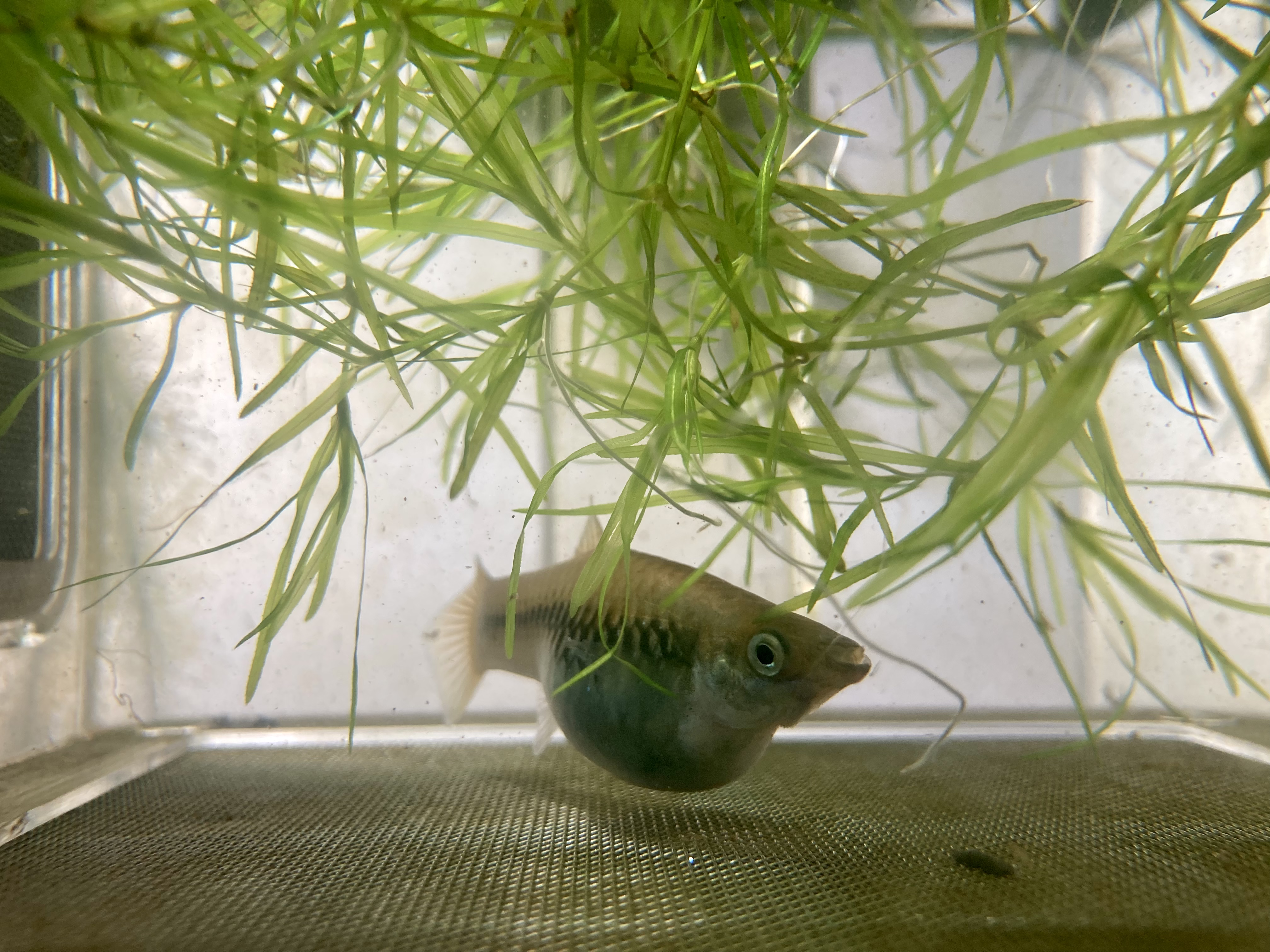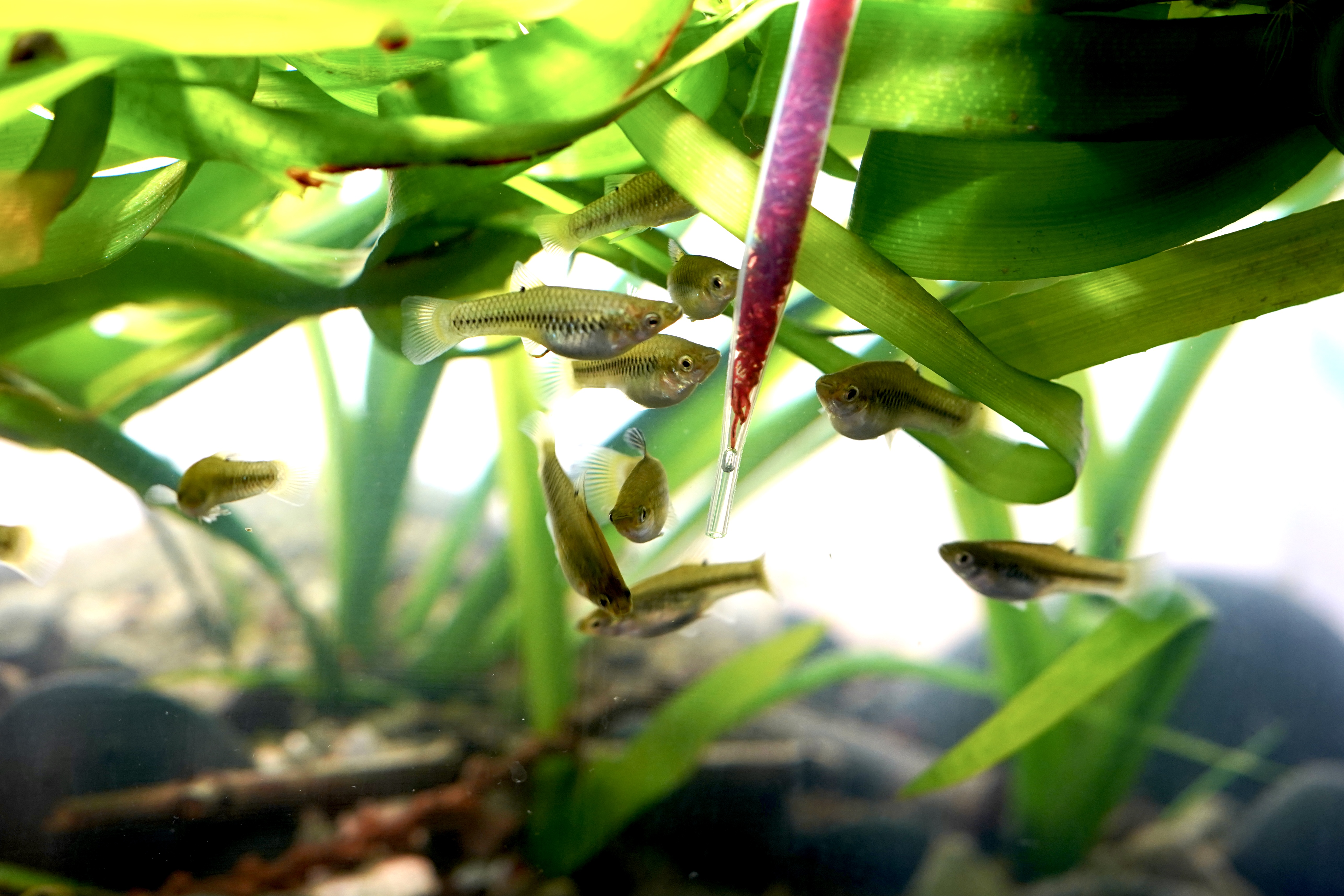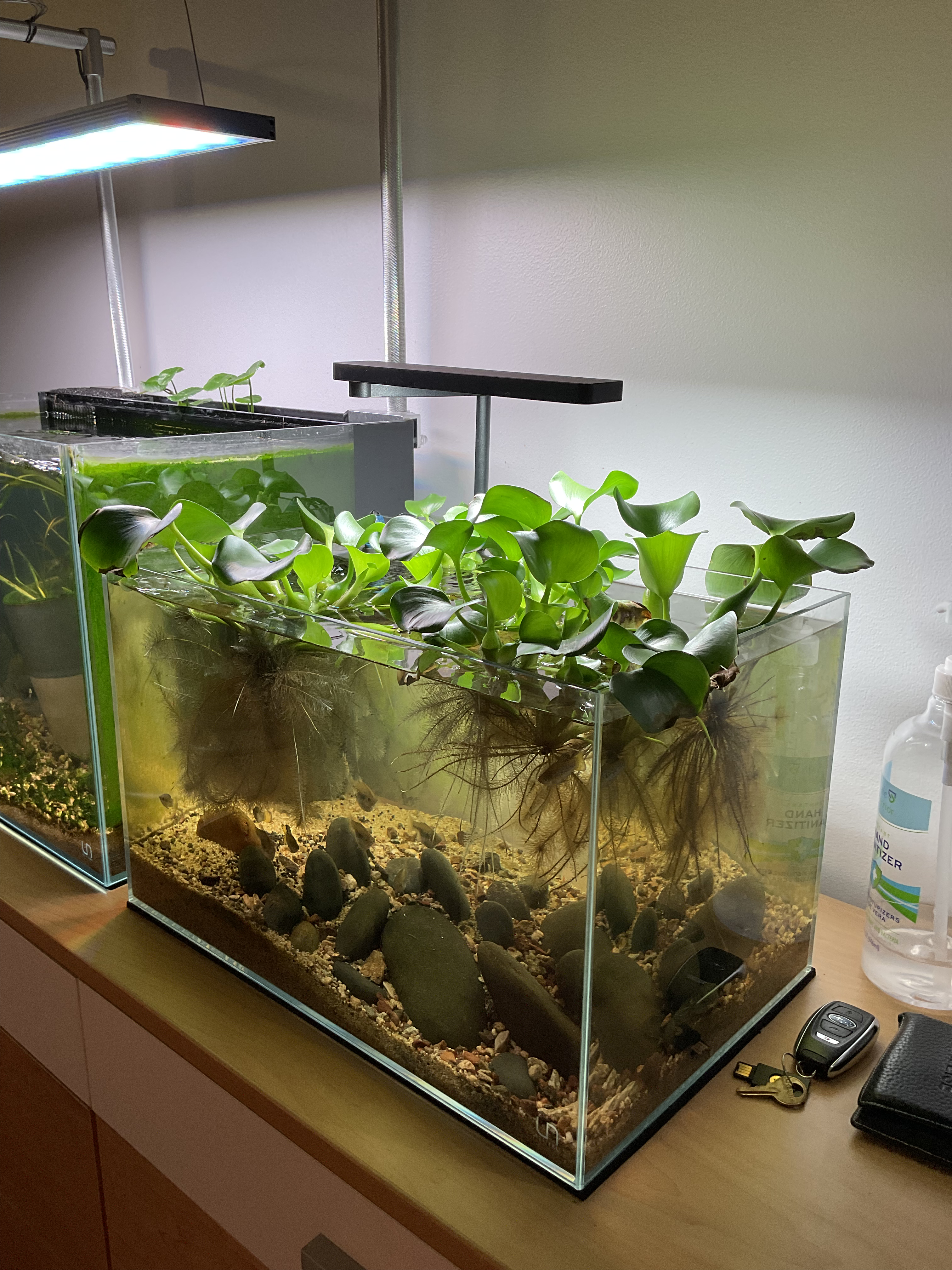Gregarious, personable, and prolific, there’s plenty to love about Perugia’s Limia (Limia perugiae).
Endemic to the Dominican Republic, this warm water livebearer grows to about four inches in length, with full and tall bodies. The males are especially impressive looking. They are adorned with a bright blue speckle throughout its body, vibrant yellow fins, and black markings at their mouths, the dorsal, pelvic, and anal fins, and towards the end of the caudal fins. Here’s an especially colorful male specimen.
Care
The Perugia’s Limia is one among of the characteristic “just add water” livebearers. They breed readily provided a warm tank, spawning about one hundred fries every three to four weeks. In the summer months, my apartment is fairly warm, reaching about 82 to 86 degrees fahrenheit. In this situation, my breeding stock breeds and spawns like a clockwork.

This species likes a mix of meaty and vegetarian diet. I predominantly feed them meaty food, with a rotation of frozen bloodworms, brine shrimps (live baby brine shrimps and frozen adult brine shrimp), daphnia, and krill flakes. They also get a supplement of spirulina flakes (I like the Spirulina 20) at times.

I keep them in dechorinated tap water (La Jolla).
Tank Setup
When I tried to breed this species intensely (I no longer do this, I’ll get to the reasons below), I kept them in a 10 gallon tank with two males and four females. The tank is unheated (as my apartment is warm, at least in the high 70s for most of the year), with a deep sand substrate decorated with crushed gravel and several beach pebbles, with no plants in the water column but several hyacinths floating on top. The tank uses a sponge filter (XY-380) and receives no water change, lit with a higher intensity light (Chihiros C2), with fertilisers dosed every other day.

The Perugia’s Limia likes to peck on the algae and mulm in my tank, so I only scrape the front glass - just to be able to see inside. Otherwise, the tank is fairly “dirty.”
“Problem Fish”
Marc Allen from the club referred to these fish as “problem fish.” He’s probably right, especially if you are trying to make a few bucks by breeding them.
The thing is, they don’t look good in a bag or in stores. This fish requires higher light to show its true colors, a condition rarely provided in stores, much less so when transferred to club auctions in bags. They look dull, a yellowish gray, with few characteristic to catch the eyes. They are in most fish stores in the San Diego area (and you can thank yours truly for that), but you probably didn’t pay them much mind most of the time. The stores didn’t care for them either, as I struggled to get credit for my adult fish, and stores would turn them down at times.
The other issue lies in the fact that they breed too quickly for most fishkeeper to keep up with, especially when you try to preserve the fries. They rarely eat their own fries given enough space, but they seem less reluctant in a smaller tank. I keep my population in a 5.5 gallon tank at the moment, and they ate most of their spawns.

Spread the Word!
At any rate, as you can clearly see, this is quite a beautiful species with many loveable aspects. They are easily cared for, personable, and enthusiastic eaters. The bottom line - they are a neglected species suitable for fishkeepers of most skill levels, and they deserve more love.